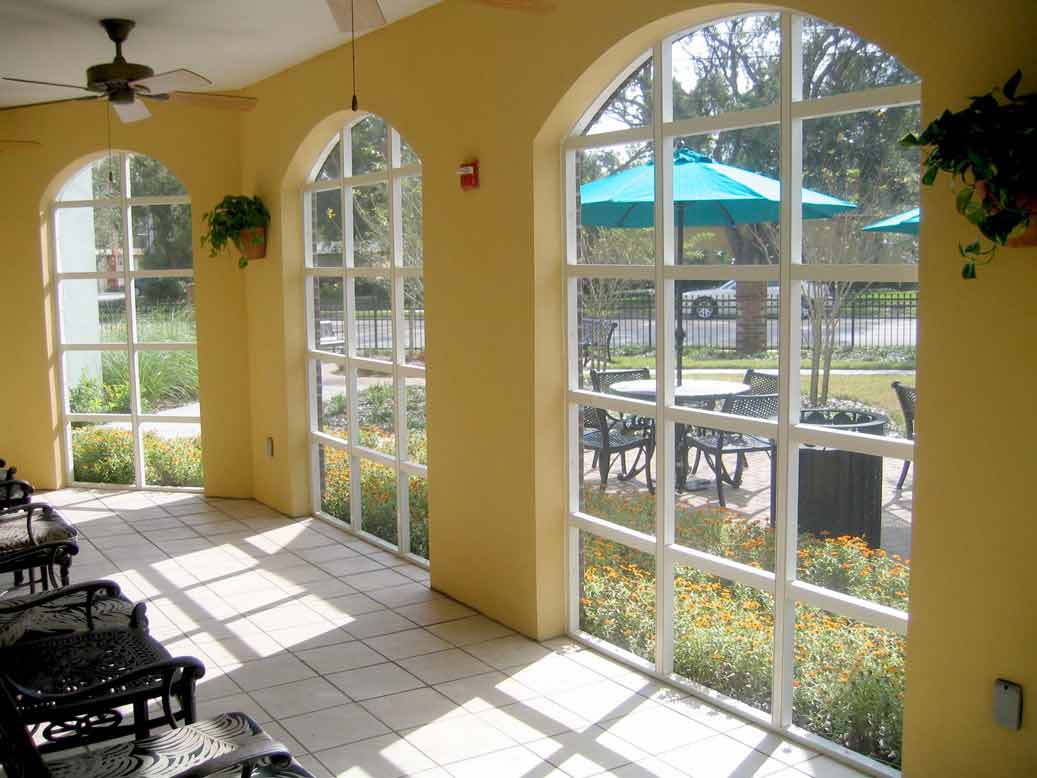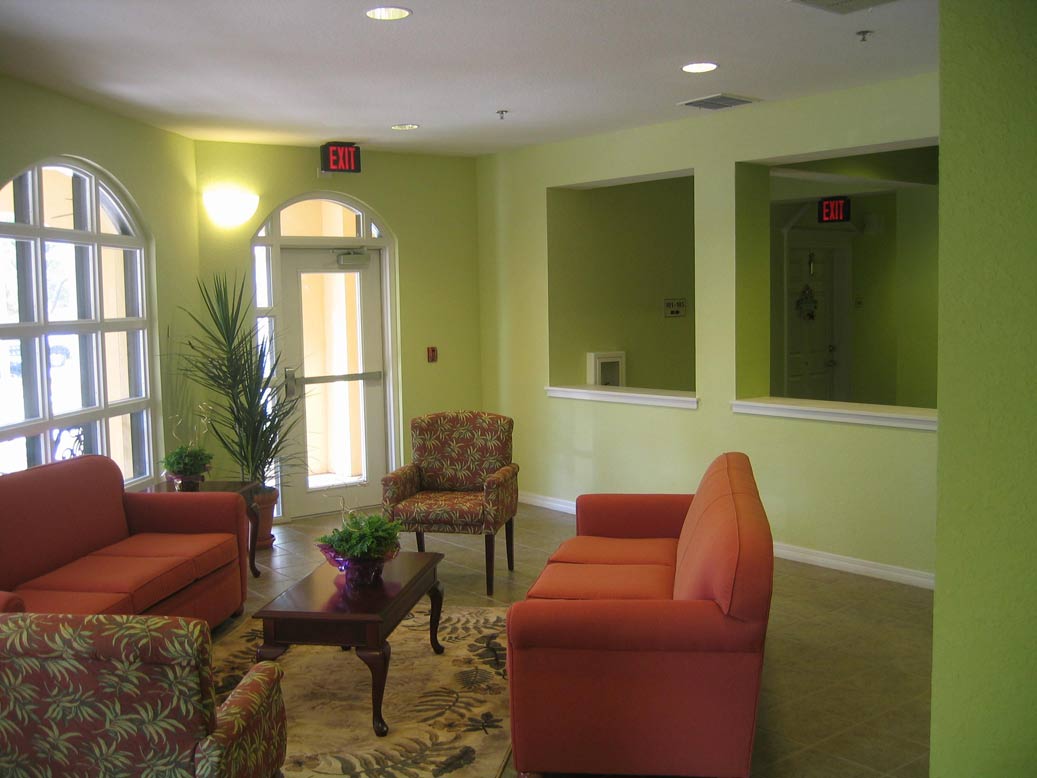Amenities become more than marketing prerequisites or necessary appointments when providers use them to weave a social fabric. Thoughtful planning, design, and managed use of common areas can transform a community from one in which residents are passive observers to one in which they are active participants.
Using amenities to advance social engagement is not only critical to residents’ comfort, but also to acceptance of the housing choice by the resident and close family members. Similarly, using amenities to enable residents to build social equity in the community—a strong social network of friends and confidants—increases the value of the housing environment.
Moreover, when providers invest in the types of amenities that strengthen the social fabric of th

e community, they gain significant returns on that investment: happier residents, stronger referrals, more durable occupancies, and a greater sense of ownership among residents of the community. Collectively, they improve performance and the bottom line.
The future will be shaped by the baby boomers, who are more youthful, more active, and more demanding than their predecessors. To meet their needs for quality of life, it is essential to consider the content, the character, and the activation of common areas to optimize their social potential.
Variety Spurs Opportunities
Social research has found that new senior residents are often intimidated about establishing a social presence and gaining peer acceptance in the community. The rate at which residents effectively interconnect with each other appears critical to their satisfaction with their housing choice. If a new resident fails to become socially integrated within 90 days, both the resident and his or her family are likely to question whether this was the “right” housing choice.
This is why it is essential to offer varied opportunities for social interaction by creating spaces that facilitate the “accident of acquaintance.” The goal is to create a place where it is easy to meet other people and develop social bonds.
Before making this leap, there are a number of basic planning and operational considerations:
- Social connectivity is better made within smaller groups than within larger groups.
- Many utilitarian activities are candidates for inviting social opportunity.
- The amount of time one is encouraged to enjoy common areas is proportionate to the potential of social engagement.
- The tone and personality of a facility is governed by the personality of management and the social interaction they characterize and encourage between residents.
With these lessons in mind, providers and designers can review common areas to identify opportunities to enrich daily functions by incorporating them into social venues.
Social research suggests that most people are more comfortable and interactive in small groups of people they regularly encounter. Intimate assemblies of 20 or fewer are gatherings where a new resident will feel more secure and less intimidated. Such smaller social gatherings are often found in extended families, neighborhood settings such as on cul-de-sacs, and regular activities such as card clubs and recreation networks.
This suggests the new resident should find it easy and natural to join with a limited subset of residents in daily interaction. Each subset in turn becomes a safety net for social migration into the larger community of residents.
Scope Out Common Areas
These smaller assemblies can be found in such routine activities as waiting for an elevator, getting the mail, doing the laundry, enjoying a meal, and participating in a hobby or pastime. They all become candidates for activating social interaction. Every common area contains the seeds of potential.
Residents can be mobilized by the shape and appointment of the space and by the comfort the spaces invite for lingering and sharing time with new acquaintances and friends. Consider the following examples:
- “Neighborhoods” have a friendly and comfortable identity to homeowners, even in multilevel structures. Although hallways and elevator lobbies on every floor are transient spaces, neighborhood common areas can emerge when these are configured to serve a limited number of dwellings and designed with natural lighting and comfortable seating, perhaps near the elevator where residents can observe all the comings and goings of their neighbors. Here, residents on each building level can begin to form a sense of neighborhood by communing within that smaller population.
- Laundry centers, convenient to such neighborhood spaces, can further the relaxing opportunity on the repurposed elevator lobby, expanding the potential for residents to meet and interact in positive ways.
- Picking up the mail at a mailroom is a regular activity. Having a small area in which to sit, preview the mail, and engage with others uses the mail function as a social networking space where residents can exchange news and information.
- Dining is the regular activity that offers the greatest degree of social interaction. Room and table arrangements can invite greater use and comfort by considering floor-planning principles used in restaurants. Seating size and arrangement should vary to suit individual preferences—from personal dining and community table settings to segmented dining room layouts. Layout variations can also feel more appropriate if sized used by defined groups or scaled down to meet demands of diners at less popular mealtimes. In any case, the designer should be mindful that the new resident can feel intimidated when walking into a large hall filled with strangers or when occupying a larger hall when the population within is well under capacity.
Think Cruise Ship When Planning Social Events
Cruise ship travelers often say that the most memorable parts of the experience were the food and the people met. Destinations notwithstanding, the quality of the meal was usually enhanced by a sociable staff and the occasion to meet strangers at the first sitting, who were recognized as acquaintances or even friends for the rest of the journey.
Social directors on cruise ships know the process of social interaction requires a little nudge. They know if new acquaintances do not find a common area of interest in the first 90 seconds after they are introduced, then there is little probability that their meeting will have any lasting value.
The staff of a se

nior living community can adopt the same manner employed by cruise social directors, by acting as the welcoming agent for the development and the other residents, and then seeking to make introductions to other residents who may share a table, a common interest, or a similar temporary need.
This requires more knowledge of each new resident and the areas of background or interest that make each unique. By intentionally pairing that new resident with others who share similar profiles, the seed for social bonding is planted. With the fellowship of a meal or activity, placed in a setting that encourages social interaction, strangers have a greater probability of linking socially in lasting and positive ways.
Communal tables in dining areas that invite single individuals to share meals with different individuals from time to time are another resource. Varying the table layout on occasion forces residents to re-group and sit with new companions. Offering some meals in different zones of the indoor area or outdoors on pleasant days also brings variety and seating mobility to the pattern of living. All can remove rote behavior and advance social connectivity in quiet and effective ways.
Thoughtful planning and design and the encouraged use of amenities not only attract residents and their families to a senior living community—they enable providers to weave a social fabric that activates and engages residents in their community life.
Look for Provider’s April issue, out in late March, for more tips on lighting and décor and the use of outdoor spaces.
Robert Koch, AIA, is a principal of Fugleberg Koch (www.fuglebergkoch.com), an architecture, planning, urban design, and development consulting firm located in Winter Park, Fla. The firm’s residential portfolio represents a broad spectrum of the multifamily industry and includes mixed-use, urban infill, mid-rise, high-rise, direct entry, senior-living, workforce housing, and affordable housing projects. Koch can be reached at (407) 629-0595.